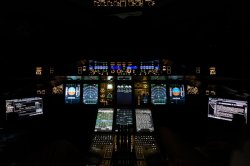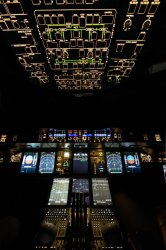jb747
Enthusiast
- Joined
- Mar 9, 2010
- Posts
- 13,516
Anyhoo … what speed would the aircraft be going when it is in 'formation' with the props? Any particular difficulties in going 'slow' (as I imagine it is)?
Watch his left hand whilst in the formation. He's working pretty hard. It never looks all that comfortable, but I expect the camera is accentuating that. Speed-wise. 200 knots or so. His leading edge flaps are out much of the time. He'd not have the instant throttle response of the piston engined aircraft.
BTW, the other two are an A-1 Skyraider, and a Mustang.
















